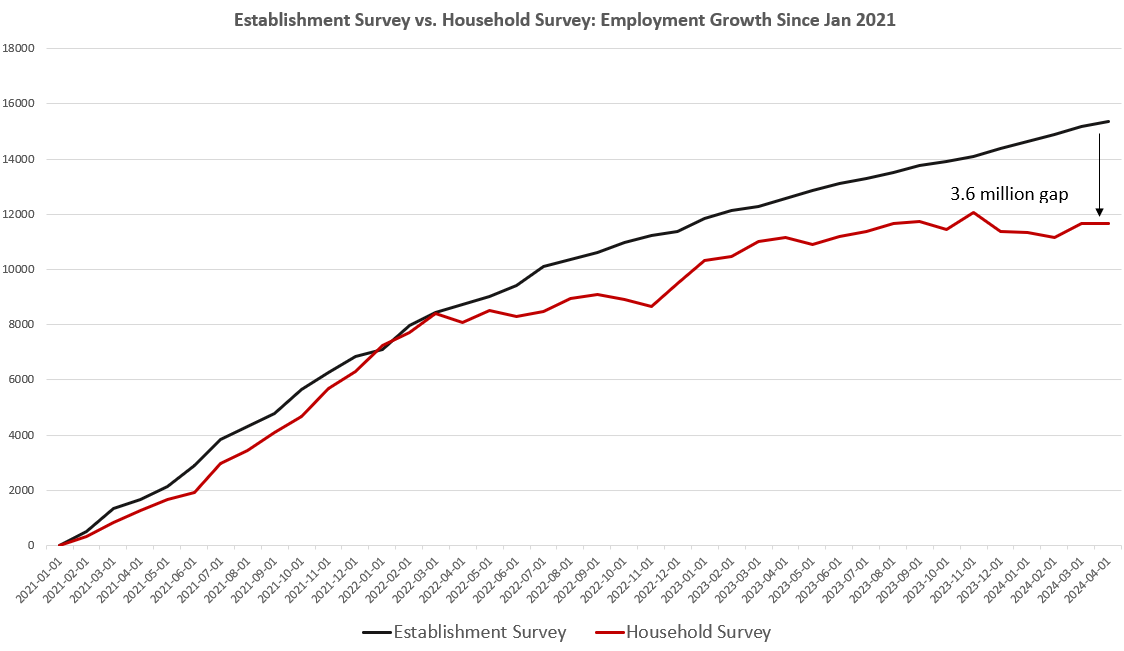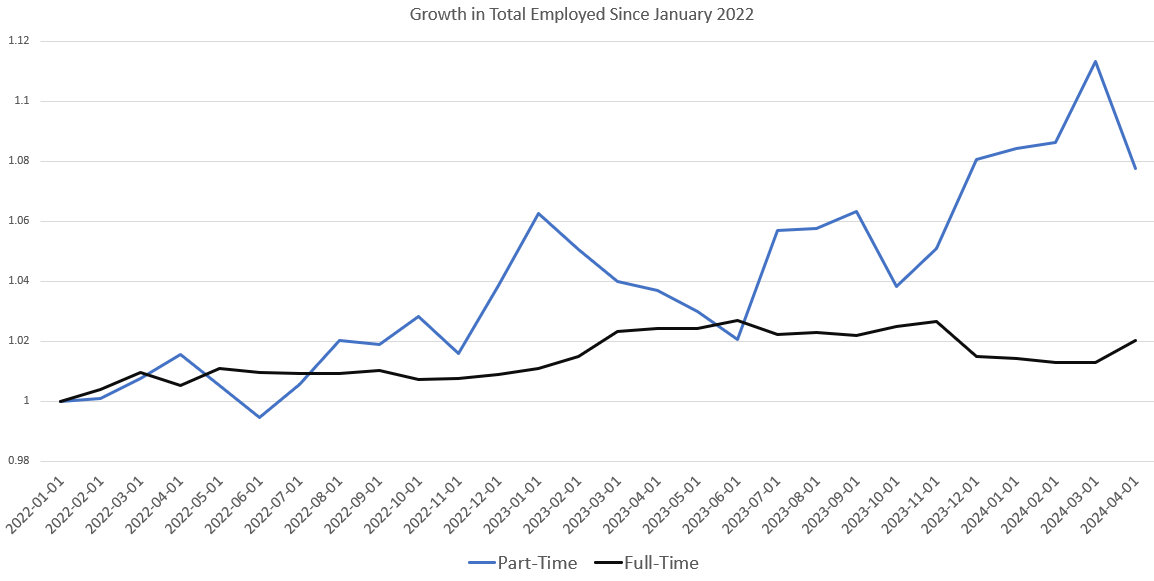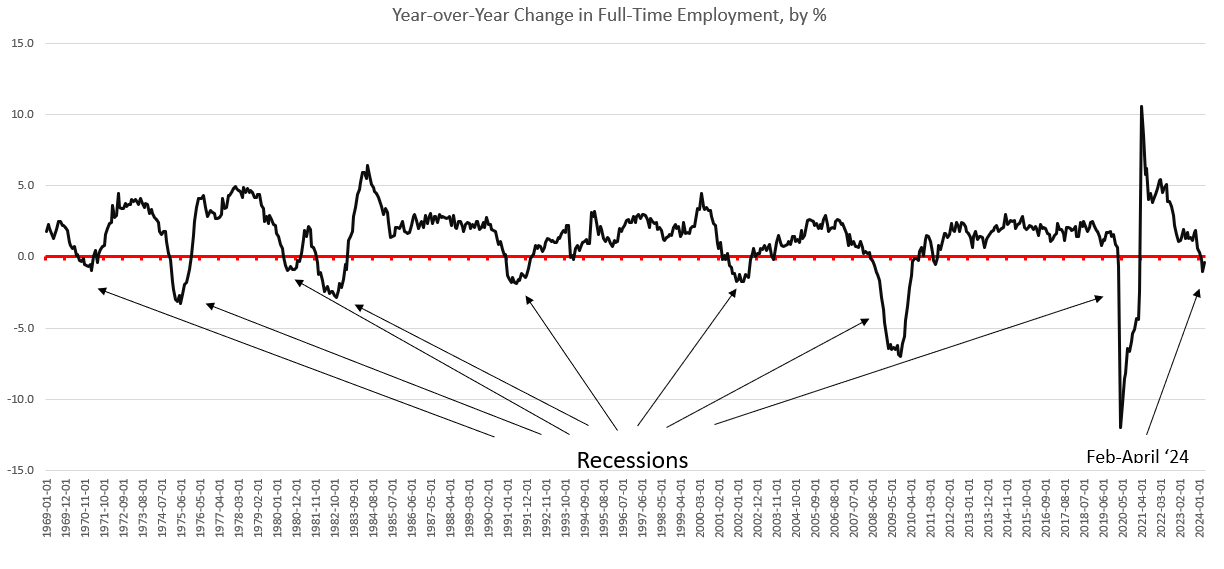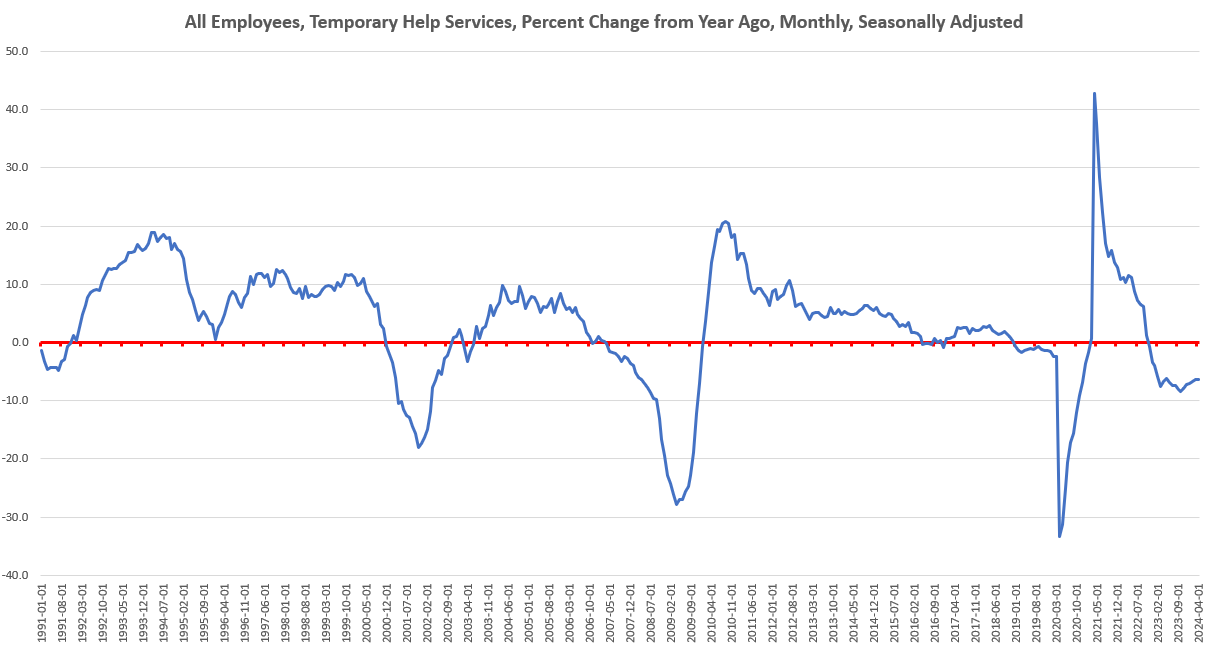According to a new report from the federal government’s Bureau of Labor Statistics this week, the US economy added 175,000 jobs for the month of April while the unemployment rate rose slightly to 3.9%. The new reported job growth was considered a “miss” in that it came in below expectations, and for the first time in months, the media did not declare the jobs report to be “a blowout” or “strong.” Instead, the official narrative seemed to be that the “slowing economy” will bring down CPI inflation, and thus the Federal Reserve will soon force interest rates back down and bring about the fabled “soft landing.” Not surprisingly, then, the lackluster jobs report led to a rally in stocks, as Wall Street anticipates a Fed rate cut. For anyone who has taken a more
Topics:
Ryan McMaken considers the following as important: 6b) Mises.org, Featured, newsletter
This could be interesting, too:
Nachrichten Ticker - www.finanzen.ch writes Die Performance der Kryptowährungen in KW 9: Das hat sich bei Bitcoin, Ether & Co. getan
Nachrichten Ticker - www.finanzen.ch writes Wer verbirgt sich hinter der Ethereum-Technologie?
Martin Hartmann writes Eine Analyse nach den Lehren von Milton Friedman
Marc Chandler writes March 2025 Monthly
According to a new report from the federal government’s Bureau of Labor Statistics this week, the US economy added 175,000 jobs for the month of April while the unemployment rate rose slightly to 3.9%. The new reported job growth was considered a “miss” in that it came in below expectations, and for the first time in months, the media did not declare the jobs report to be “a blowout” or “strong.” Instead, the official narrative seemed to be that the “slowing economy” will bring down CPI inflation, and thus the Federal Reserve will soon force interest rates back down and bring about the fabled “soft landing.” Not surprisingly, then, the lackluster jobs report led to a rally in stocks, as Wall Street anticipates a Fed rate cut.
For anyone who has taken a more skeptical view of the jobs reports over the past year, there isn’t much that’s surprising in this report, except for the fact that it appears payroll jobs may finally be reflecting reality. Overall, this report is simply a continuation of ongoing trends: namely, full-time jobs are falling and the “job growth” reported so enthusiastically by the media doesn’t seem to show up in terms of actual people employed. If we look more closely at this report, what we really find is that the total number of employed persons has flatlined while half a million full-time jobs have disappeared over the past year.
Establishment Survey vs. Household Survey
The establishment survey report shows that total jobs—a total that includes both part-time and full-time jobs—increased, month over month, in April by 175,000. The establishment survey measures only total jobs, however, and does not measure the number of employed persons. That means that even when job growth comes mostly from people working multiple part-time jobs, the establishment survey shows big increases while the total number of employed persons does not. In fact, total employed persons can fall while total jobs increases. For April, as total jobs rose by 175,000, total employed workers rose only 25,000.
This part-time jobs situation may help explain why there is a sizable gap between the establishment survey and the household survey since early 2022. If we look at the total increase in both measures over the past three years, we find a gap has opened and persisted over more than two years. Indeed, as of the April report, the gap is at 3.6 million. The household survey also shows that total employed persons has been virtually unchanged for nine months. Since August 2023, total employed persons have decreased by 9,000. Over the same time period, total “jobs” has increased by more than 1.8 million. Since November, total employed persons has fallen by 375,000. Overall, the total number of employed persons has flatlined for the past nine months.

Assuming that the establishment survey is a realistic picture of the economy at all—an assumption that may or may not be true—then the current economy is producing many more jobs than actual workers.
A Recession in Full-Time Jobs
Looking at total growth in employed persons, versus total growth in “jobs” we find that there is virtually no growth in employed persons in spite of constantly rising totals of jobs. It appears the job growth we do see is overwhelmingly part-time jobs.
Over the same nine months that total employed persons has stagnated—and total jobs increased 1.8 million—we find primarily growth in part-time jobs. Over the past twelve months, total part-time jobs increased by 1 million. During the same period, full-time jobs fell by more than 500,000. That is, net job creation during that period has been all part-time. The graph compares how much full time and part time jobs have grown since January 2022. We find that since early 2022, full-time job growth is up 2 percent while part-time job growth is up nearly 8 percent. Since early 2023, full-time jobs have flatlined while part-time jobs have grown considerably.

Over the past three months, in fact, the year-over-year measure of full-time jobs has fallen into recession territory. Full-time jobs were down, year over year, in February, March, and April. Over the past fifty years, three months in a row of negative growth in full-time jobs has always been a recession signal and has occurred when the United States has been in recession, or about to enter a recession:

The full-time jobs indicator now reflects what we’ve seen in temporary jobs for months. For decades, whenever temporary help services are negative, year over year, for more than three months in a row, the US is headed toward recession. This measure has now been negative in the United States for the past eighteen months.

This is to be expected in a weakening economy. Empirical studies have shown that economies tend to shift to part-time work in times of economic downturn as a means of allowing employers more flexibility in reducing costs. This has been observed internationally, and not just in the United States.
Similarly, temporary jobs are often the first jobs to be eliminated by firms, and as the BLS puts it, “flexible labor arrangements provided by temp agencies allow firms to scale down their operations readily and without the added expense of separation pay or having to let go of their best workers.” In a weakening economy, there is no longer a need to use THS workers as a means of screening potential new workers or adding work hours to supplement the full-time work force. It appears that over the past year, the need for new workers is fading fast and dropping temp workers is a cheap way to cut costs.
If we take a larger look around, we find plenty of worrisome data in the leading indicators: The Philadelphia Fed’s manufacturing index is in recession territory. The same is true of the Richmond Fed’s manufacturing survey. The Conference Board’s Leading Indicators Index continues to point to recession. The yield curve points to recession. Commercial real estate is in big trouble. Net savings turned negative for only the second time in decades in 2023, and has been negative now for four quarters in a row. The economic growth we do see is being fueled by the biggest deficits since covid.
Indeed, we now finally may be getting to the point where more insightful but cautious observers start to declare the US economy as truly “in recession.” Indeed, today on the Forward Guidance Podcast, Fed watcher Danielle DiMartino Booth said this:
“Given how weak industrial production has been, given what the revisions say to personal income minus government transfers...Given what we’re seeing, it’s looking increasingly like the US has indeed entered recession.” She suggests the current recession began in October 2023.
Is today’s soft jobs print a sign of labor market weakness hiding under the surface?
Here’s how @DiMartinoBooth is seeing things:
- Recession likely started in October 2023
- Census data reveals economy began shedding job losses in Q3 (192,000 *net* job losses in third… pic.twitter.com/ND6Qnv2guV
— Jack Farley (@JackFarley96) May 3, 2024
In spite of all this, some members of the permabull-booster caste of economists and investment salespeople continue to suggest that a “soft landing” is in the works, and “disinflation” will soon kick in.
Wednesday’s FOMC press conference, however, suggests that chairman Powell and the Fed economists have noticed that the disinflation narrative doesn’t seem to actually reflect reality. As last month’s CPI data showed, price growth hit a seven-month high in March, rising to 3.5 percent. The so-called “core CPI” came in at 3.8 percent, almost double the Fed’s arbitrary two-percent price inflation target. In spite of this persistent price inflation, Powell essentially declared that he won’t be raising the target policy interest rate any time soon. This suggests Powell is well aware of the weak jobs situation and knows the fragile jobs market can’t handle any additional rate hikes.
In other words, consumers should get used to ongoing price inflation. The Fed won’t let interest rates rise—although it should—to combat price inflation, Rather, the Fed is still hoping it can thread that needle of pushing down inflation while somehow keeping the easy-money fueled jobs boom going. But, it may be that it’s already months too late for the Fed to pull off that fantasy. It wouldn’t be the first time the Fed is months behind on admitting the truth about recession. Back in 2008, months after the Great Recession had begun, Fed chairman Bernanke was going on TV and saying there was no recession on the horizon. Powell may soon find himself in a similar position.
Tags: Featured,newsletter
